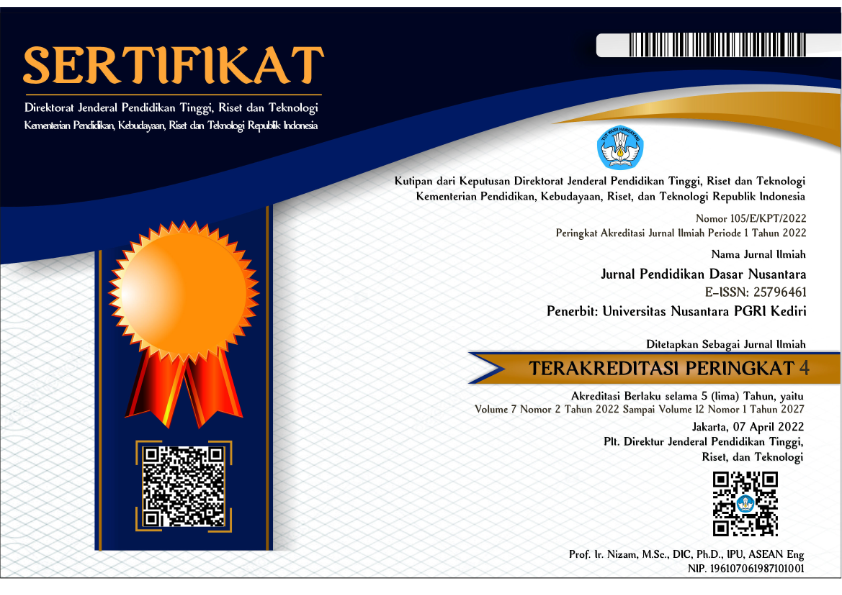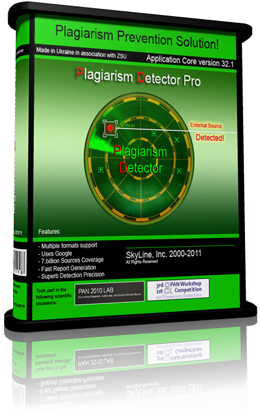MODEL PROBLEM BASED INTRUCTION BERBANTUAN MIND MAPPING PADA MATERI PERMASALAHAN SOSIAL DI LINGKUNGAN SETEMPAT UNTUK MENINGKATKAN AKTIVITAS DAN HASIL BELAJAR SISWA KELAS IV SD
Abstract
Abstract: The purpose of this study to describe the application of the Problem Based Instruction model assisted of Mind Mapping model, student activities, and student learning outcomes in grade IV SDN 2 Pringapus Trenggalek. The research method used is descriptive qualitative research method with type research design using classroom action research (CAR) conducted in two cycles, cycle 1 and cycle 2 with research subjects 4th grade students of SDN 2 Pringapus amounting to 24 students. The results of the pre-cycle, student learning activities 63% and 68% of learning outcomes. Cycle 1 student activity results obtained 84% and 74% of learning outcomes. Cycle 2 and the results of student activity increased to 92% and 85% of learning outcomes.
Key Words: Problem Based Instruction Model, Mind Mapping Model, Activities, Learning Outcomes
Abstrak: Tujuan penelitian ini untuk mendeskripsikan penerapan model Problem Based Intruction berbantu model Mind Mapping, aktivitas siswa, dan hasil belajar siswa kelas IV SDN 2 Pringapus Kabupaten Trenggalek. Metode penelitian yang digunakan yaitu metode penelitian diskriptif kualitatif dengan jenis penelitian menggunakan desain penelitian tindakan kelas (PTK) yang dilakukan dalam 2 siklus, yaitu siklus-1 dan siklus-2 dengan subjek penelitian siswa kelas IV SDN 2 Pringapus yang berjumlah 24 siswa. Hasil dari pra siklus, aktivitas belajar siswa yaitu 63% dan hasil belajar 68%. Siklus-1 diperoleh hasil aktivitas siswa 84% dan hasil belajar 74%. Siklus-2 dan diperoleh hasil aktivitas siswa meningkat menjadi 92% dan hasil belajar 85%.
Kata Kunci: Model Problem Based Intruction, Model Mind Mapping, Aktivitas, Hasil Belajar
Downloads
Downloads
Published
Issue
Section
License
Authors who publish with this journal agree to the following terms:
- Copyright on any article is retained by the author(s).
- The author grants the journal, the right of first publication with the work simultaneously licensed under a Creative Commons Attribution License that allows others to share the work with an acknowledgment of the work’s authorship and initial publication in this journal.
- Authors are able to enter into separate, additional contractual arrangements for the non-exclusive distribution of the journal’s published version of the work (e.g., post it to an institutional repository or publish it in a book), with an acknowledgment of its initial publication in this journal.
- Authors are permitted and encouraged to post their work online (e.g., in institutional repositories or on their website) prior to and during the submission process, as it can lead to productive exchanges, as well as earlier and greater citation of published work.
- The article and any associated published material is distributed under the Creative Commons Attribution-ShareAlike 4.0 International License





























